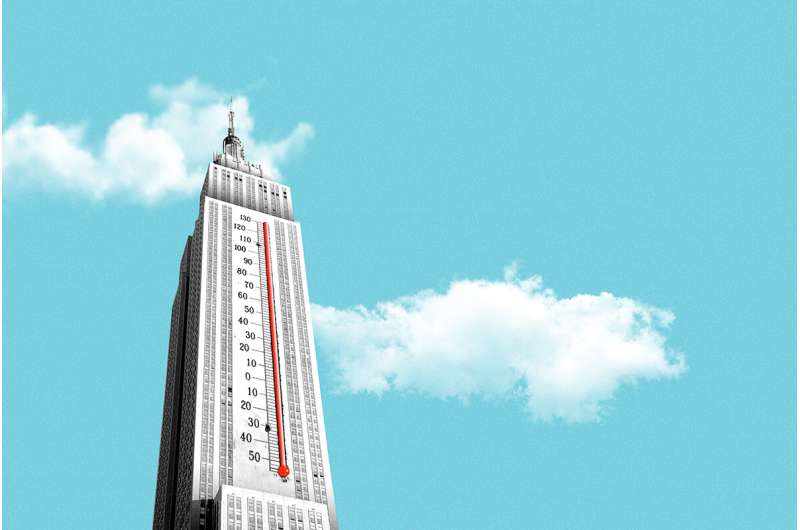New data-driven global climate model provides projections for urban environments

Cities only occupy about 3% of the Earth's total land surface, but they bear the burden of the human-perceived effects of global climate change, researchers said. Global climate models are set up for big-picture analysis, leaving urban areas poorly represented. In a new study, researchers take a closer look at how climate change affects cities by using data-driven statistical models combined with traditional process-driven physical climate models.
The results of the research led by University of Illinois Urbana Champaign engineer Lei Zhao are published in the journal Nature Climate Change.
Home to more than 50% of the world's population, cities experience more heat stress, water scarcity, air pollution and energy insecurity than suburban and rural areas because of their layout and high population densities, the study reports.
"Cities are full of surfaces made from concrete and asphalt that absorb and retain more heat than natural surfaces and perturb other local-scale biophysical processes," said Zhao, a civil and environmental engineering professor and National Center for Supercomputing Applications affiliate. "Incorporating these types of small-scale variables into climate modeling is crucial for understanding future urban climate. However, finding a way to include them in global-scale models poses major resolution, scale and computational challenges."
Global climate models project future scenarios by modeling how broader-scale processes like greenhouse gas emissions force the global climate to respond. By combining this technique with a statistical model that emulates a complex and detailed climate model for urban landscapes, Zhao's team confronted the urban-to-global information gap.
The team applied its urban climate emulation technique to data from 26 global climate models under intermediate- and high-emissions scenarios. This approach allowed researchers to model outputs into city-level projections of temperature and relative humidity through the year 2100, permitting climate change and uncertainty quantification.
The model predicts that by the end of this century, average warming across global cities will increase by 1.9 degrees Celsius with intermediate emissions and 4.4 C with high emissions, with good agreement among existing climate models over certain regions, Zhao said.
The projections also predicted a near-universal decrease in relative humidity in cities, making surface evaporation more efficient and implying that adaptation strategies like urban vegetation could be useful.
"Our findings highlight the critical need for global projections of local urban climates for climate-sensitive urban areas," Zhao said. "This could give city planners the support they need to encourage solutions such as green infrastructure intervention to reduce urban heat stress on large scales."
Currently, the projections do not account for the effects of future urban development. However, the researchers hypothesize that they can extend their strategy to make up for this. "The methodology, overall, is very flexible and can be adjusted to capture things like finer time scales and can even be applied to other ecosystems, like forests and polar regions, for example," Zhao said.
More information: Global multi-model projections of local urban climates. Nature Climate Change. DOI: 10.1038/s41558-020-00958-8.
Journal information: Nature Climate Change
Provided by University of Illinois at Urbana-Champaign
















